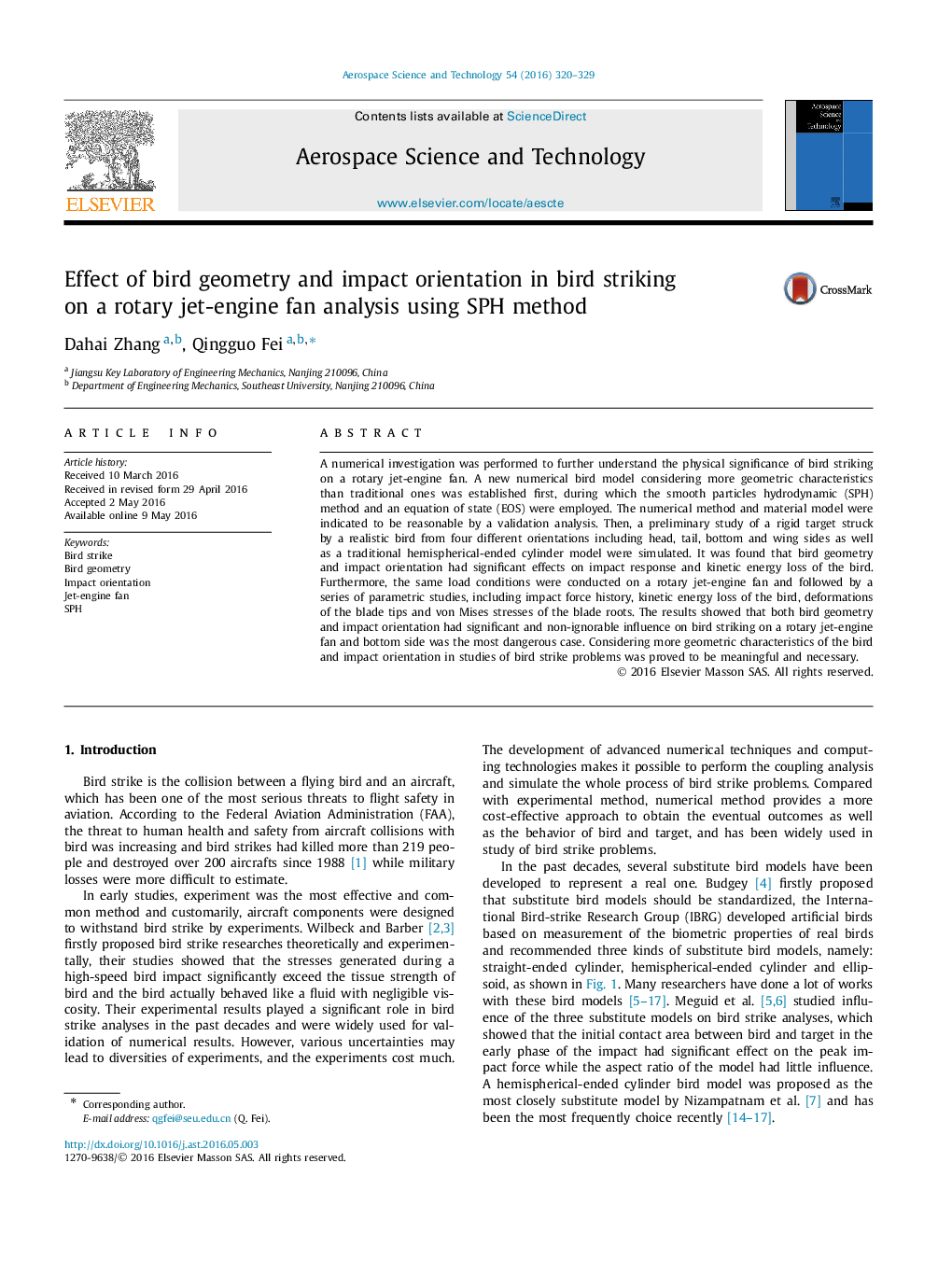| Article ID | Journal | Published Year | Pages | File Type |
|---|---|---|---|---|
| 8058606 | Aerospace Science and Technology | 2016 | 10 Pages |
Abstract
A numerical investigation was performed to further understand the physical significance of bird striking on a rotary jet-engine fan. A new numerical bird model considering more geometric characteristics than traditional ones was established first, during which the smooth particles hydrodynamic (SPH) method and an equation of state (EOS) were employed. The numerical method and material model were indicated to be reasonable by a validation analysis. Then, a preliminary study of a rigid target struck by a realistic bird from four different orientations including head, tail, bottom and wing sides as well as a traditional hemispherical-ended cylinder model were simulated. It was found that bird geometry and impact orientation had significant effects on impact response and kinetic energy loss of the bird. Furthermore, the same load conditions were conducted on a rotary jet-engine fan and followed by a series of parametric studies, including impact force history, kinetic energy loss of the bird, deformations of the blade tips and von Mises stresses of the blade roots. The results showed that both bird geometry and impact orientation had significant and non-ignorable influence on bird striking on a rotary jet-engine fan and bottom side was the most dangerous case. Considering more geometric characteristics of the bird and impact orientation in studies of bird strike problems was proved to be meaningful and necessary.
Keywords
Related Topics
Physical Sciences and Engineering
Engineering
Aerospace Engineering
Authors
Dahai Zhang, Qingguo Fei,
